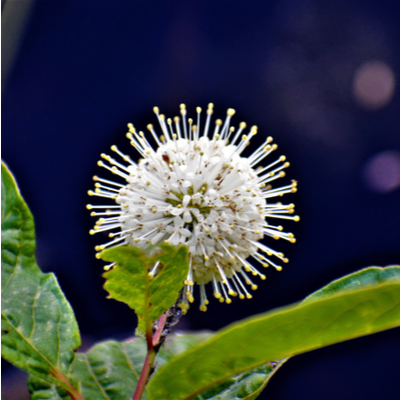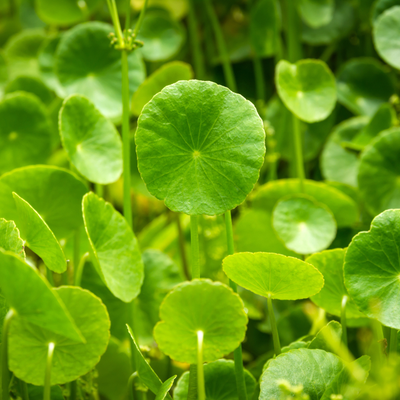Ah, the Florida sun! It’s so nice to enjoy the warm weather all year long. Unfortunately, Florida weeds love the sun as much as you do. While spring is still a month away, now’s the time to learn about the most common Florida weeds so you can identify and treat them this year.
Common Florida Weeds
Terms You Should Know
Before we discuss the most common Florida weeds, there are some important phrases to know about weed control. First, you’ll need to know if your herbicide is pre-emergent or post-emergent. As you may have surmised from the name, the title refers to whether the weed killer is applied before or after the weeds have sprouted. Ideally, it would be best if you treated with pre-emergent to prevent problems from growing. However, weeds are tricky. So if you see them popping up in your lawn mid-spring, all is not lost.
The second term you should know is selective vs. non-selective herbicide. Selective herbicides will only target weeds. This type of weed killer is ideal for places with mixed vegetation – lawns, garden beds, vegetable boxes, etc. Basically, you want to use something that won’t harm plants you want to keep around. A non-selective herbicide is good for areas like cracks in the driveway, sidewalk, or along the foundation of a house. In this circumstance, you don’t care what is growing there because nothing should be growing there at all. A non-selective herbicide will make sure that all plant growth is knocked out.
Florida Weed Identification
American Black Nightshade
American Black Nightshade is an annual that is commonly found across the state of Florida. You’ll find it everywhere, from farmers’ fields to lawns to gardens. It has upright growth, unlike other weeds that grow close to the ground. It can reach four feet in height. In particular, this weed is tough to eradicate once it sprouts since it has become resistant to certain chemical herbicides.  Therefore, the best way to combat American Black Nightshade is to use a pre-emergent weed killer so you can stop any seeds from sprouting in the first place.
Therefore, the best way to combat American Black Nightshade is to use a pre-emergent weed killer so you can stop any seeds from sprouting in the first place.
Buttonbush
You may not realize you have this in your yard until the white flowers emerge in late spring. It can reach heights of 6 – 12 feet if left unattended, though most are on the smaller side at only four feet.
Chinese Tallow
Chinese Tallow is one of Florida’s invasive weed culprits. This pernicious plant competes with local native foliage for nutrients and space. Chinese Tallow is actually a deciduous tree, so you’d definitely notice this on a small lawn. However, if you have a larger stretch of property, it may be cropping up without your knowledge. You can identify it by its broad leaves, which taper to a point. Small yellow flowers bloom on spikes about eight inches long in the spring. It also produces a milky sap and tiny fruit about half an inch in diameter. The dried out seeds of the fruit often remain on the tree and resembles popcorn. As such, you may hear this weed referred to as “popcorn tree.” Certain herbicides may be applied to the bark, but the best way to remove this tree is to cut it down as close to the earth as possible and, if possible, digging out the stump.
Cogongrass
Cogongrass is another invasive weed species to Florida. This perennial weed usually occurs in circular patches with grass blades yellowish or green in color. The leaf blades are serrated with an off-center white line down the middle. Seeds appear fluffy and white like the tops of wheat. Usually, this weed emerges in spring after the first mowing. This weed can be eradicated with herbicide, but it isn’t easy to treat perennials since they are hardy by nature. It’s best to dig out these weeds or even burn the infected area. Note: Always check with your local municipality to make sure it is safe to do so. Better yet, leave eradicating Cogongrass to a professional lawn care company.
Pennywort
Also known as Dollarweed, this perennial produces bright green, round leaves with scalloped edges. Unlike some of the other perennials we’ve discussed, this one responds well to herbicide application. However, you should make sure to read the labels carefully. Different turfgrasses will need specialized mixes. And again, try to use a pre-emergent herbicide if possible so you can spray and forget about it.
Nutsedge
This perennial has two species, yellow and purple, that are commonly found in Florida lawns. It rarely produces seeds, but it does produce rhizomes and tubers. Its shape resembles that of turfgrass, but upon inspection, you’ll notice the shoots are harder and stiffer than common turfgrass. And as you may have guessed, the varieties are named after the color of the flowers they produce. Both flowers are long and skinny. This plant responds to herbicides or manual removal. Keep in mind, though, that digging it out is tricky since it relies on runners. Research has shown that weed mats and mulch are both effective at suppressing this annoying weed.
Florida Beggarweed
This is a perennial broadleaf weed. It is one of the late bloomers – not emerging until summer – and its flowers resemble a pea plant. It produces hair seeds that will stick to clothing that brushes by, hitchhiking its way to new pastures. Unlike other perennials, Beggareweed seems to respond well to both pre and post-emergent herbicides.
Get Control Of Florida Yard Weeds – Call Flowers Turf & Pest Management
Don’t let weeds ruin your lawn! Our team of licensed professionals follow a multi-step lawn care program to combat broadleaf weed growth, supply soil with nutrients, and prevent insect infestations. Call 321-254-1929 or contact us below.
